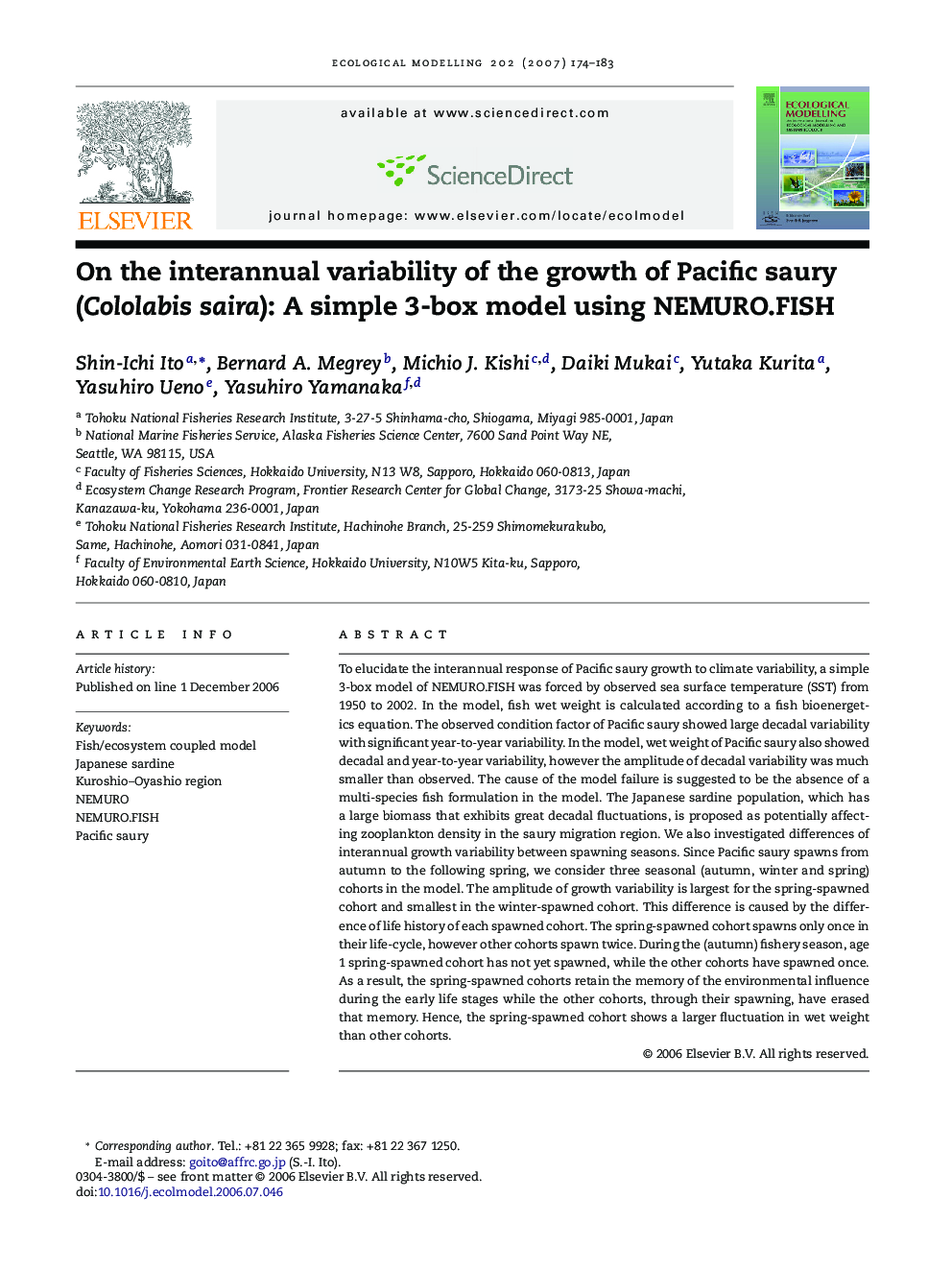| کد مقاله | کد نشریه | سال انتشار | مقاله انگلیسی | نسخه تمام متن |
|---|---|---|---|---|
| 4378743 | 1617553 | 2007 | 10 صفحه PDF | دانلود رایگان |
عنوان انگلیسی مقاله ISI
On the interannual variability of the growth of Pacific saury (Cololabis saira): A simple 3-box model using NEMURO.FISH
دانلود مقاله + سفارش ترجمه
دانلود مقاله ISI انگلیسی
رایگان برای ایرانیان
موضوعات مرتبط
علوم زیستی و بیوفناوری
علوم کشاورزی و بیولوژیک
بوم شناسی، تکامل، رفتار و سامانه شناسی
پیش نمایش صفحه اول مقاله

چکیده انگلیسی
To elucidate the interannual response of Pacific saury growth to climate variability, a simple 3-box model of NEMURO.FISH was forced by observed sea surface temperature (SST) from 1950 to 2002. In the model, fish wet weight is calculated according to a fish bioenergetics equation. The observed condition factor of Pacific saury showed large decadal variability with significant year-to-year variability. In the model, wet weight of Pacific saury also showed decadal and year-to-year variability, however the amplitude of decadal variability was much smaller than observed. The cause of the model failure is suggested to be the absence of a multi-species fish formulation in the model. The Japanese sardine population, which has a large biomass that exhibits great decadal fluctuations, is proposed as potentially affecting zooplankton density in the saury migration region. We also investigated differences of interannual growth variability between spawning seasons. Since Pacific saury spawns from autumn to the following spring, we consider three seasonal (autumn, winter and spring) cohorts in the model. The amplitude of growth variability is largest for the spring-spawned cohort and smallest in the winter-spawned cohort. This difference is caused by the difference of life history of each spawned cohort. The spring-spawned cohort spawns only once in their life-cycle, however other cohorts spawn twice. During the (autumn) fishery season, age 1 spring-spawned cohort has not yet spawned, while the other cohorts have spawned once. As a result, the spring-spawned cohorts retain the memory of the environmental influence during the early life stages while the other cohorts, through their spawning, have erased that memory. Hence, the spring-spawned cohort shows a larger fluctuation in wet weight than other cohorts.
ناشر
Database: Elsevier - ScienceDirect (ساینس دایرکت)
Journal: Ecological Modelling - Volume 202, Issues 1â2, 24 March 2007, Pages 174-183
Journal: Ecological Modelling - Volume 202, Issues 1â2, 24 March 2007, Pages 174-183
نویسندگان
Shin-Ichi Ito, Bernard A. Megrey, Michio J. Kishi, Daiki Mukai, Yutaka Kurita, Yasuhiro Ueno, Yasuhiro Yamanaka,